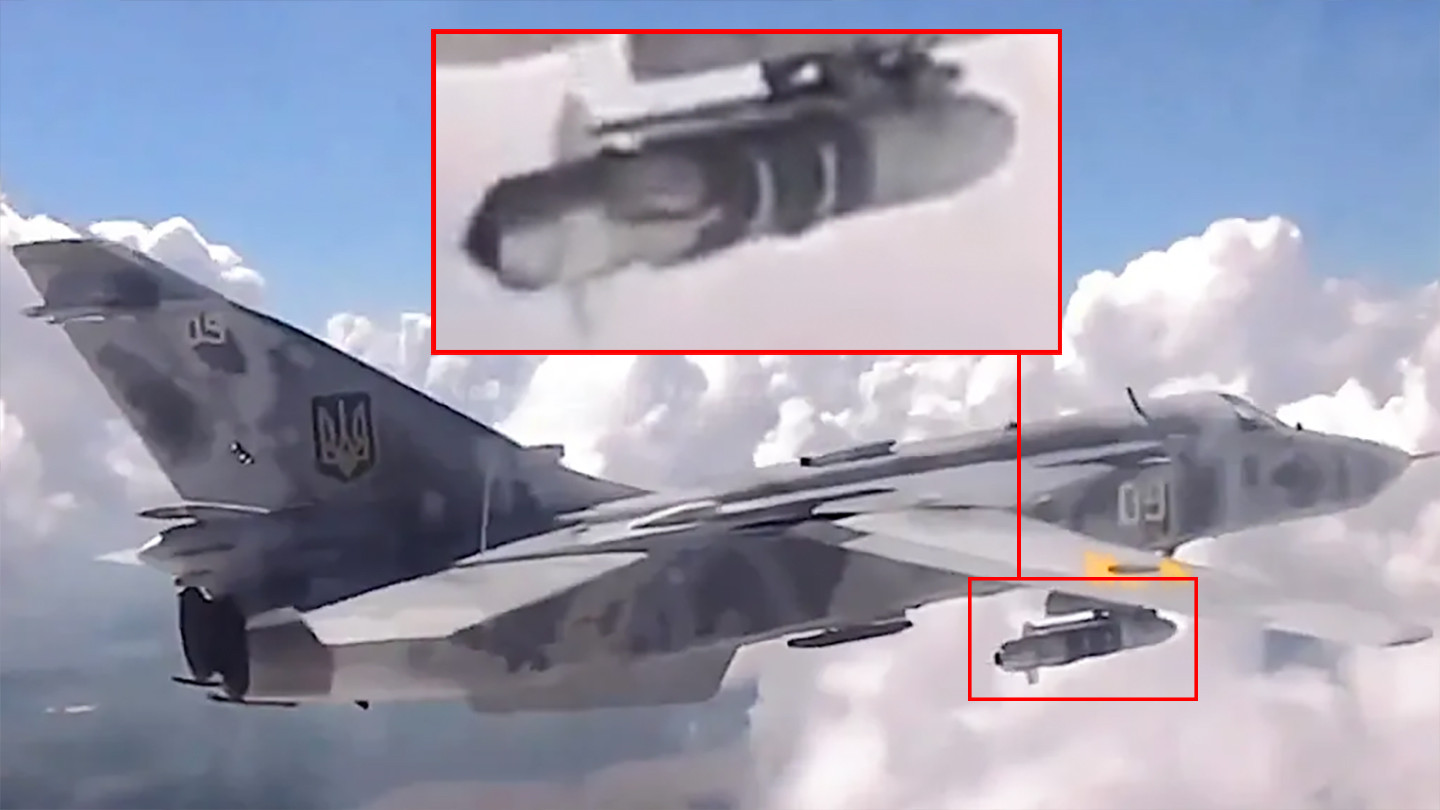A video has emerged showing a Ukrainian Su-24 Fencer swing-wing attack jet carrying what is said to be new air-launched guided munition. Stand-off munitions are in particularly high demand in Ukraine given the density of enemy air defenses and having a new and domestically-developed source of such weapons would be a major boon for the country’s air force.
The clip in question, seen below, began circulating online earlier today after appearing first on the unofficial @UkrAirForce channel on the Telegram social media platform. An accompanying post said that the Su-24, which has the bort number White 09, was from the 7th Tactical Aviation Brigade and that the footage had been shot from a two-seat Su-27UB Flanker from the 831st Tactical Aviation Brigade. The mystery munition is not seen being released in the video and this may have been a so-called captive carry test wherein a store remains attached to the aircraft throughout the sortie to gather basic airworthiness and other data. It could also have been launched after this video was shot.
As for the munition itself, from what can be seen it appears to consist of three distinct sections – nose, mid-body, and tail – a configuration that could point to it being a kit of sorts to convert existing ‘iron bombs’ into precision-guided weapons. This is an increasingly common concept in precision munition design. The Ukrainian Air Force already has Western-developed examples in its inventory in the form of Joint Direct Attack Munition-Extended Range (JDAM-ER) and AASM-250 Hammer bombs supplied by the United States and France, respectively. Russia has also been making extensive use of increasingly larger dumb bombs fitted with add-on precision guidance kits.
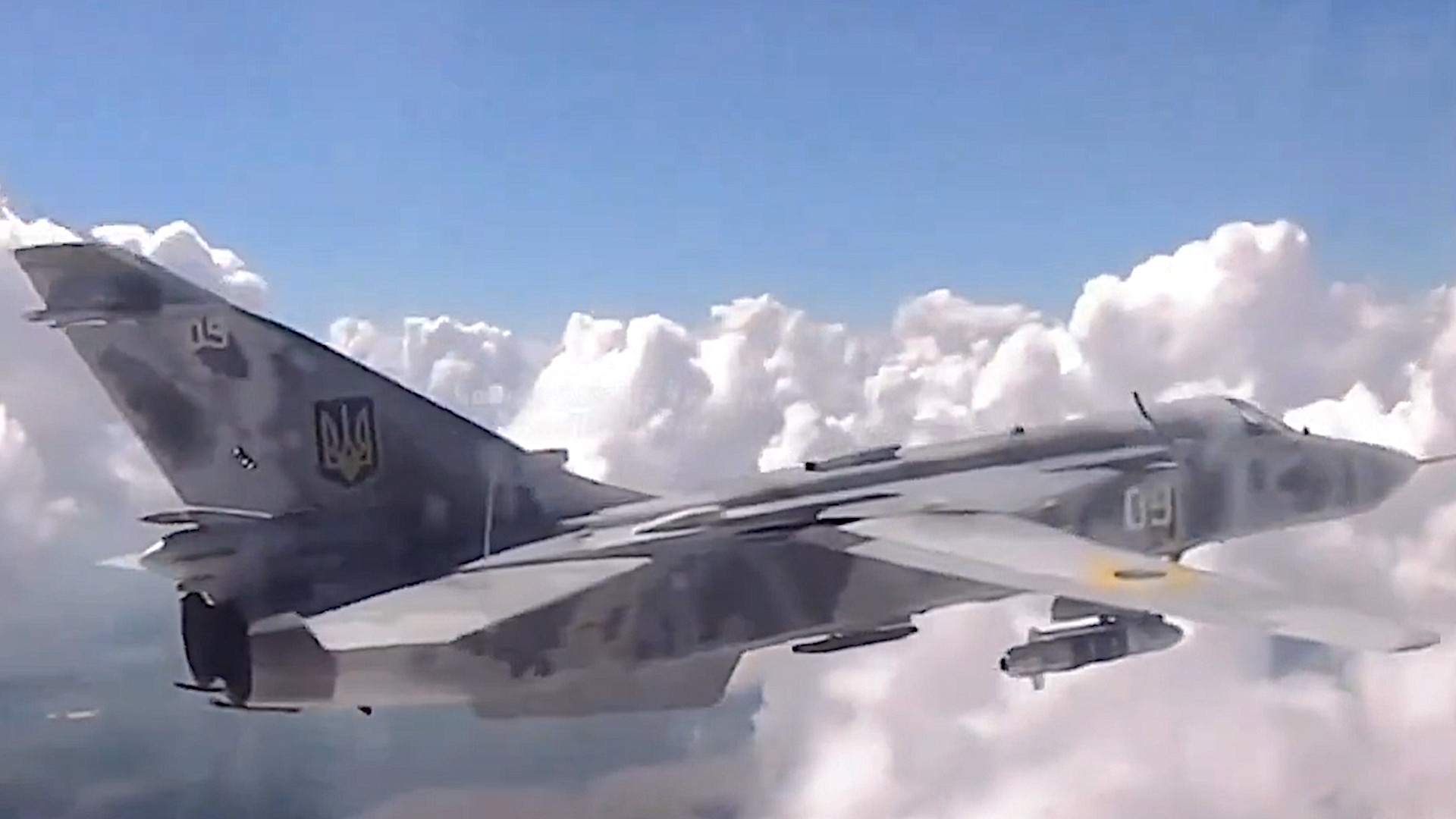
The tail section has a cruciform fin arrangement and what appears to be an opening at the rear that might indicate a propulsion system of some kind, such as a small turbojet or a solid-fuel rocket. What may be an inlet notch toward the rear of the body could point to an air-breathing engine. Ukraine has already been employing multiple types of jet-powered kamikaze drones. Ukraine’s French-supplied Hammer precision-guided bombs also feature a rocket booster.
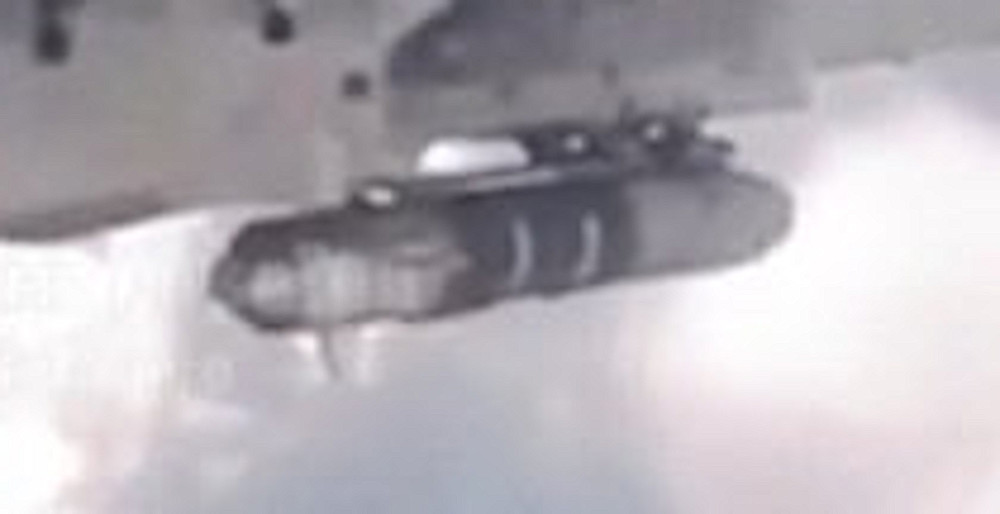
A ‘rib’ is also present along the top of the munition along with metal bands around the center of the body, which all points to the munition having a pair of pop-out wings. There is also a possibility that could be part of the assembly required to attach it to the Su-24’s underwing pylon. The JDAM-ERs, as well as Small Diameter Bombs (SDB), that Ukraine has received from the United States feature pop-out wings, as do Russia’s bombs fitted with that country’s add-on precision-guided munition kits.
A propulsion unit and/or pop-out wings would both help dramatically extend the range of the mystery munition. At the same time, the maximum range of any air-dropped unpowered precision-guided glide bomb depends on altitude and how far the weapon can reach generally decreases the lower the launch platform is flying at the time of release. Ukrainian Air Force aircraft regularly fly a very low levels to help reduce their exposure to hostile air defenses. Toss bombing and other tactics can be employed to help extend range during lower-altitude launches. However, adding a propulsion system provides a potential path to not only increasing overall range, but doing so even when the munition is released from a lower-flying aircraft.
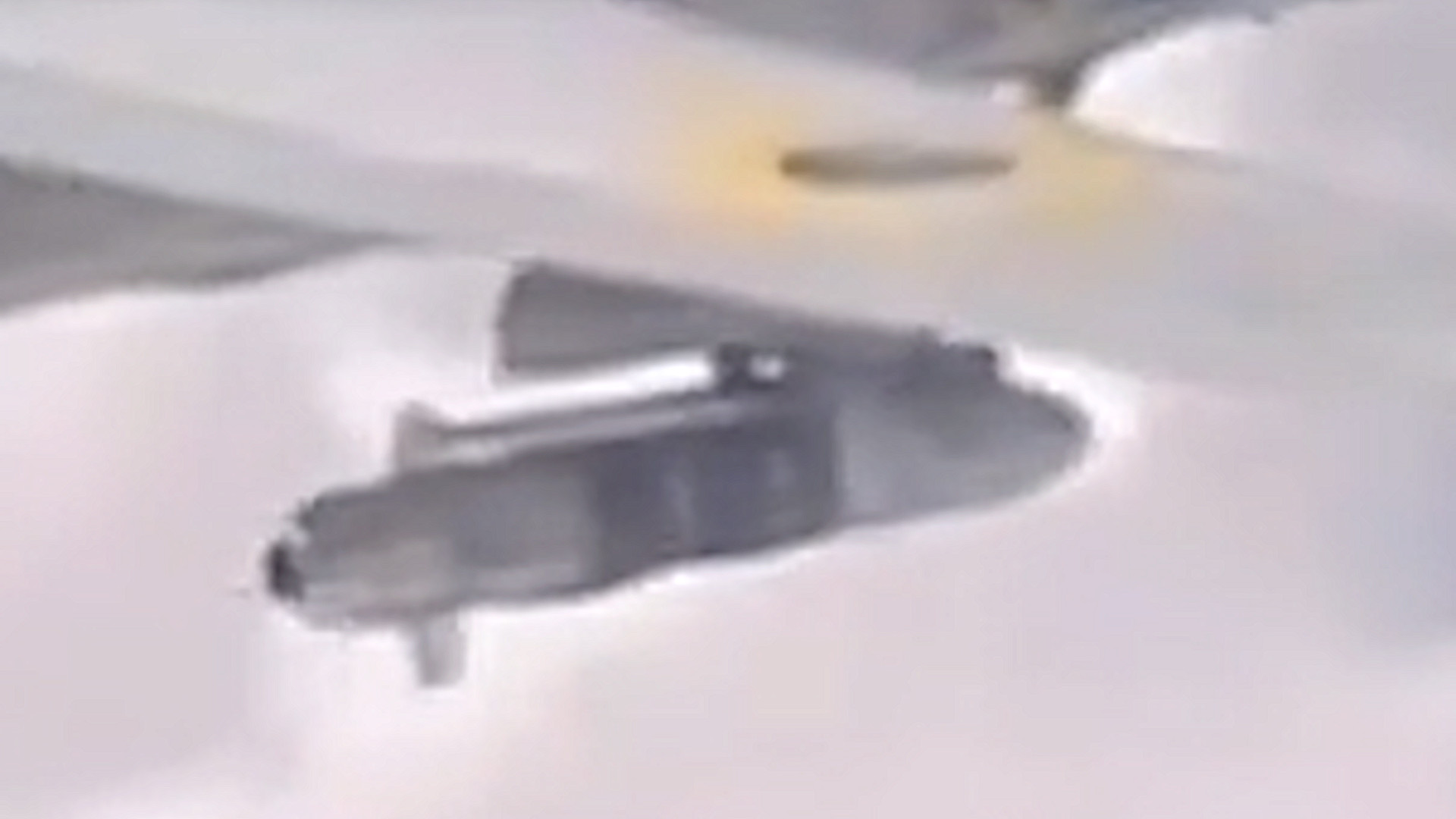
It is also possible that the design of the newly emerged mystery munition is more of a traditional missile or even an air-launched drone rather than a kit made for a conventional bomb. There are some very broad similarities between what can be seen under White 09’s wing and Ukraine’s recently unveiled jet-powered Paliyanytsia, which has been described as a missile/drone hybrid.
It’s unclear whether this weapon is intended specifically for Ukraine’s Su-24s, as well. Ukrainian Fencers are the country’s launch platforms for stealthy Storm Shadow and SCALP-EG air-launched cruise missiles provided by the United Kingdom and France, respectively. Ukraine’s MiG-29 Fulcrums and Su-27 Flankers have been the primary carriers for other Western-supplied air-launched precision air-to-ground munitions like the JDAM-ER, SDB, and Hammer bombs, as well as AGM-88 High-speed Anti-Radiation Missiles (HARM).
It’s unknown currently how the new Ukrainian air-launched munition might get to its target however far away it is. With its growing stable of longer-range kamikaze drones, Ukraine has demonstrated a clear capacity to produce satellite navigation-assisted guidance systems capable of directing a platform to a specific set of coordinates. The land-attack version of the country’s domestically developed ground-launched Neptune cruise missile is also said to feature an imaging infrared seeker with scene/image matching capability to help find its target in the terminal stage of flight.
Whatever the mystery munition’s exact capabilities are, the biggest benefit it could offer might be a new domestic source of air-launched precision-guided munitions potentially with stand-off range. The Storm Shadows and SCALP-EGs, in particular, are understood to have been available only in relatively limited quantities in the United Kingdom and France even before tranches of them started heading to Ukraine. JDAM-ER variants are not in widespread use in the U.S. military or other foreign armed forces currently, either. Questions are regularly raised about how steady the flow of other Western precision air-launched munitions might be, in general. The War Zone just recently highlighted these issues in detail in the context of reports that the U.S. government could be close to sending AGM-158 Joint Air-To-Surface Standoff Missile (JASSM) series cruise missiles to Ukraine for use with its newly arrived F-16 fighters.
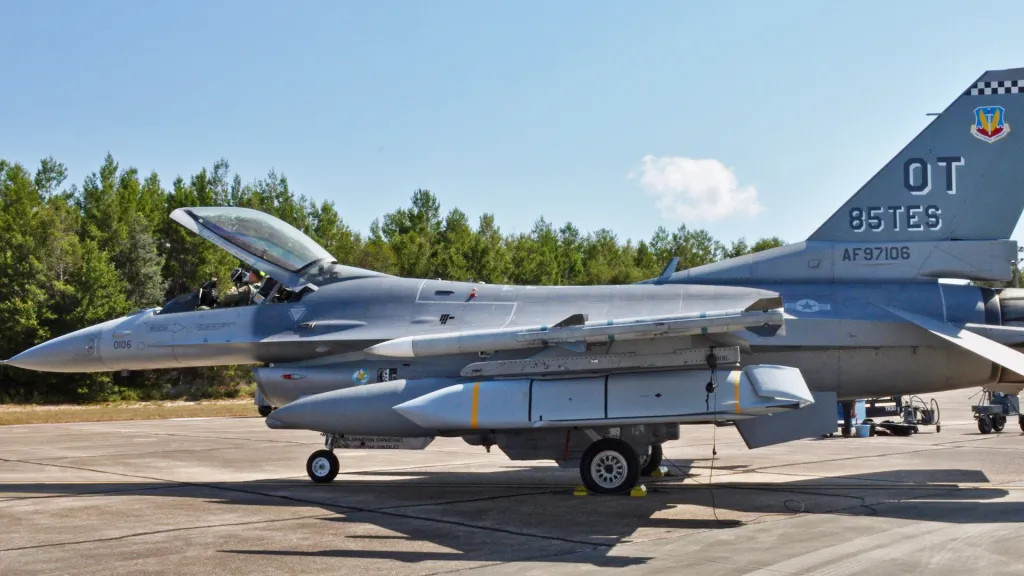
It also emerged earlier this year that a new U.S. Air Force project to develop a new relatively low-cost precision-guided air-launched stand-off munition is focused primarily on meeting Ukrainian demands for weapons of this kind.
Any new precision-guided munitions developed in Ukraine, whether designed to be launched from the air or the ground, would have the additional benefit of not being subject to any foreign restrictions on their employment. The rules that the U.S. government and others have imposed on how Ukrainian forces can use the air and ground-launched stand-off weapons they have received have come under increasing scrutiny. Ukrainian officials have been increasingly pleading, and doing so publicly, for more flexibility in striking targets inside Russia proper, especially in light of the ongoing incursion into the latter country’s Kursk region.
So, while much remains to be learned about Ukraine’s newly emerged mystery air-launched munition, it does reflect a clear need and just having an additional source of weapons of this kind produced in the country could be extremely valuable by itself.
Contact the author: joe@twz.com
